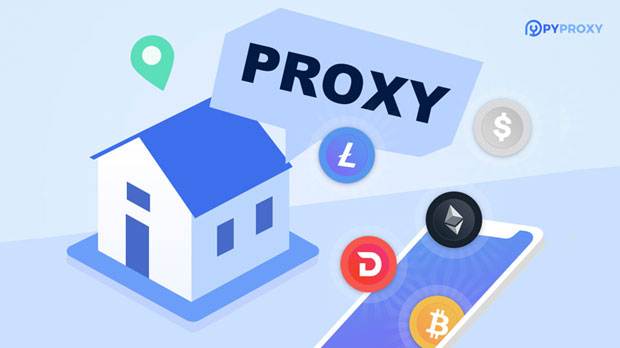How to detect the exact geographic location of IPs in the US proxy IP list?
Understanding the geolocation of IP addresses within a U.S. proxy ip list is crucial for various reasons, including security, compliance, and improving service delivery. By determining the precise location of an IP, businesses and individuals can ensure their data is routed correctly, verify the authenticity of their user traffic, and implement location-specific strategies. Detecting the accurate geographic location involves the use of advanced geolocation technologies and tools. This article will dive into methods for pinpointing the exact location of an IP address in a proxy list, analyzing its importance, and exploring different approaches to achieve accurate results. Understanding IP Geolocation and Its ImportanceIP geolocation refers to the process of determining the physical location of a device based on its IP address. Geolocation data includes critical information such as the city, region, country, and even the latitude and longitude of the device's connection point. In the context of proxy servers, this means identifying where a proxy server is located, despite the fact that it may be acting as an intermediary between the end-user and the destination site. For businesses or security analysts, accurately determining the location of proxy ip addresses can help identify suspicious activities, ensure users are not evading regional restrictions, and optimize content delivery. Without this information, businesses might suffer from fraudulent activities, data breaches, or inefficient routing, leading to a poor user experience.Methods to Detect Accurate Geolocation of IPsThere are several methods available to determine the accurate geolocation of an IP address in a U.S. proxy IP list. These methods typically rely on databases, algorithms, and online services that map IP addresses to geographical locations. Below, we break down the various methods and explain their effectiveness.1. Using IP Geolocation DatabasesIP geolocation databases are one of the most common tools used to detect the physical location of an IP address. These databases store information on the geographic location of IP ranges, providing precise details about the country, state, city, and sometimes even the exact coordinates. The data is typically collected from various sources, including internet service providers (ISPs), user-submitted data, and network providers.These databases can be used in real-time to detect the location of an IP in a proxy list. Some databases even offer a high level of precision, allowing businesses to identify the provider or region that the proxy is masking. The accuracy of these databases varies, with some providing location information within a few miles of the true location.2. Using IP Geolocation APIsMany online services offer IP geolocation APIs, which businesses can integrate into their systems to verify the location of IPs in real-time. These APIs typically work by querying an extensive geolocation database and returning the corresponding geographic location. Geolocation APIs can offer more advanced features, such as detecting the use of proxies or VPNs, identifying whether the IP is static or dynamic, and offering more granular location data.The use of APIs is especially helpful for businesses that need to perform frequent and scalable geolocation checks, such as when handling large volumes of traffic through proxy IP lists. By incorporating these APIs, users can ensure they are accurately identifying the true location of their traffic sources.3. Cross-Referencing with Other Data PointsSometimes, relying solely on IP geolocation tools can lead to less accurate results, especially when proxies are involved. Cross-referencing the detected IP address with other data points, such as the user's behavior, device information, or even cookies, can help refine the results.For example, a user might be connecting to a U.S. proxy, but their actual physical location might be in another country. By analyzing factors like language settings, time zone data, or region-specific content, businesses can detect inconsistencies and verify the true location of the IP.4. Identifying Proxy BehaviorAnother method to detect the location of an IP in a proxy list is to analyze the proxy's behavior. Some proxies exhibit specific characteristics that can indicate their geographic location. For instance, certain proxy services are known to route traffic through specific regions or have data centers in particular states or cities.By monitoring the latency, speed, and response times of requests from a proxy server, businesses can infer the general location of the proxy server. A high latency may indicate that the proxy is located far from the requesting region, while lower latency could signal that it is close by.5. Using Reverse DNS LookupReverse DNS lookup is another useful method for identifying the location of a proxy IP. By performing a reverse DNS lookup on the IP address, it is possible to retrieve the domain name associated with the IP. Sometimes, the domain name can provide insights into the geographical region of the proxy server.For instance, if the domain name indicates a specific city or provider, this can serve as a clue to the location of the proxy. However, this method is not always reliable, as many proxies might not have a resolvable domain name or may use generic names that do not reveal much information.6. Using Network Tracing ToolsNetwork tracing tools such as traceroute can help determine the path traffic takes from the user to the destination server. By tracing the path of packets and mapping the network route, users can pinpoint the physical location of the proxy server. Traceroute can provide detailed information about intermediate hops, including geographical regions, allowing for a clearer picture of the proxy’s location.While network tracing tools are effective in many cases, they may not be foolproof, especially if the proxy server uses sophisticated routing techniques to mask its location.Challenges in Detecting Proxy IP LocationsDespite the methods mentioned, there are several challenges that can affect the accuracy of detecting the geolocation of IPs in proxy lists. Proxies are designed to obscure the true identity and location of users, so it is not uncommon for IP geolocation tools to return misleading results.1. VPN and Proxy Masking: Some proxies and VPNs actively mask the user’s real location, making it difficult to pinpoint the accurate geolocation.2. Dynamic IPs: Dynamic IP addresses, which change periodically, can make it challenging to track the true location of the IP.3. Distributed Networks: Proxy servers may be part of large, distributed networks, making it harder to identify a specific physical location.ConclusionDetecting the accurate geolocation of IPs in a U.S. proxy IP list is not a straightforward task, as proxies are designed to mask the true location of users. However, by using advanced geolocation databases, APIs, and other methods such as reverse DNS lookup, network tracing, and cross-referencing, businesses can enhance their ability to identify the real location of a proxy IP. While challenges exist, these techniques can provide a higher level of certainty, helping to ensure better security, compliance, and optimized user experiences. Understanding how to detect proxy IP locations is key for anyone relying on accurate geographic information in today’s increasingly digital world.
2025-02-12

























































